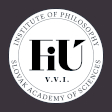According to standard philosophical analyses of the ontology of texts, texts are abstract objects. However, that analysis has the paradoxical consequence that texts cannot be read: one cannot read something that lacks material existence. The essay resolves the paradox by introducing a distinction between the ordinary conception of a text—the supposed object of the philosophical analysis of the concept of a text—and the philosophical conception of a text, the end-product of that analysis. It is demonstrated by means of examples that a text as ordinarily conceived is at once physical and immaterial (and so can certainly be read, because of its physical side), and at once one and many, while the philosopher, uninterested in the actual, obviously illogical character of the ordinary conception of a text, turns the text into one abstract object by fiat—an object which cannot, of course, be read. It is argued that the ordinary concept of a text is handy in practical contexts precisely because it ignores troublesome distinctions, while the philosophical concept of a text serves no genuine purpose, since the theoretical understanding of verbal communication requires a partly different intellectual framework.
